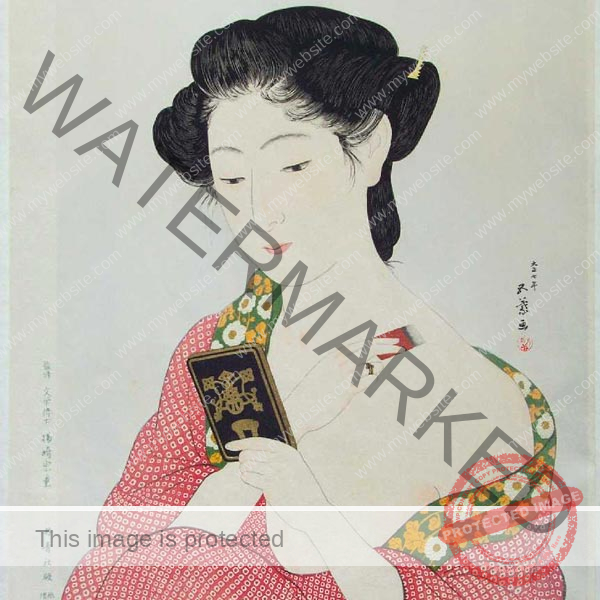Haiku

A Faux Japanese Tale of Love and Romance
haiku n. pl. hai-ku, also hai-kus
- A Japanese lyric verse form having three unrhymed lines of five, seven, and five syllables,
traditionally invoking an aspect of nature or the seasons. - A poem written in this form.
“The Lover
As he stole his way closer to his beloved’s chamber, he could hear the soft lilt of her gentle song, and the quiet shuffling that told him her whereabouts in her room.
Finally he was there, only a small screen separating him from the object of his passion. He bent his head gently towards one of the small openings in the screen, and carefully put his eye to it. Inside in the profound gloom of the lady’s bed chamber, he could just make out the shapely curves of her pale body as she undressed. Excitement and anticipation nearly driving him till he thought he might go mad, he whispered to his love a poem he had prepared for exactly this moment, and had been rehearsing ever since that beautiful day when he first set eyes on his love at the great Lord Terunaka’s gempuku for his Second Son, Jiro Takeda.
He sang softly to her, saying
Even more than in my days gone by
When I did not know you,
Oh, Green leaves of the willow,
More than ever, this morning
My thoughts are troubled
The lady, meanwhile he could see had stopped moving around and was listening to his song. At this thought his heart leapt nearly to choke him, and he felt around in his kimono to find the love token he had prepared for her, and, calling to her, passed it through the lattice of the screen, and spoke to her more of his undying yearning to be with her. The lady, who was named Haru, and was the youngest daughter of Lord Terunaka, softly replied that three nights hence he may enter her bed chamber, but for now he must be patient. As he was about to leave curiosity got the better of Haru, and she called to him saying “What is your name?”
The young man came back and whispered that his name was Saburo, of the Shenshi clan, and was a warrior in the service of the great Samurai Shenshi Yoshimoto. With that, stealthily the young warrior stole away into the night, as though he had never been there.
Two nights and three days Saburo struggled against his rising passion, and inspite of the urging of his companions, refused to visit their regular inn, where the most beautiful geishas could be had for very little money and a great deal of pleasure. He was determined that his night of love with the Lady Haru should be an affair of fire and brimstone.”
For those interested, here is a tiny helper, in Japanese matters, that may relate to the story below.
Names given to boys and girls were commonly chosen in this manner,
Boys were named in order of their birth thus, ICHIRO (first son), JIRO, SABURO, SHIRO, GORO etc.
Girls were named after flowers, qualities or objects, such as, TAKE (bamboo), HARU (springtime), YUKI (snow), KIKU (chrysanthemum), SEI (purity), TOSHI (goodness) and so on.
Boys bore a different name until their coming of age, at thirteen, or in the case of the samurai at fifteen. Girls came of age at thirteen. From there on the sexes did not play together.
TANJOBI, First birthday.
HITAI-EBOSHI, paper or stiff cloth headgear for boys, who became entitled to wear it at the age of five, worn high on the forehead, and tied with a ribbon.
The ceremony of adulthood, was called GEMPUKU, whereupon the young adult was entitled to wear his man’s head-dress, EBOSHI. During GEMPUKU the godparents gave the boy his man’s name, comprised of two parts, one hereditary, the other personal. Only high ranking people had the privilege of a family name. The lower people usually had only personal names, and in the case of craftsmen and artists as well as other guild members often added the name of their trade as a prefix. In many cases people from the same village all had the same name though they were not related by blood.
TORII, the gateway of a Shinto shrine.
Just thought it may help clarify some things.